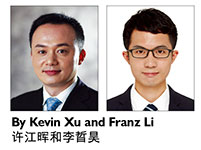 The National Development and Reform Commission (NDRC) released the Anti-trust Guideline for Automotive Industry (draft for comment) (the Guideline) to solicit public opinions. One of the big attractions of the Guideline is the introduction of the concept of presumed exemption for vertical agreements.Presumed exemption for vertical agreements It is burdensome for not only the enforcement agencies but the business operators, economically and technically, to precisely implement prohibitions of vertical monopoly agreements and to successfully apply the limited exemptions under the safe harbour provision. To provide a guide to the enforcement agencies to correctly apply Article 14 and Article 15 of the Anti-Monopoly Law (the AML) and to help lower the business operators’ cost in connection with their daily regulatory compliance, the Guideline introduces the presumed exemption for vertical agreements. Generally, certain types of restrictions on territory and customers set by business operators who have no appreciable market power (the Presumed Exemptions), as expressly listed in the Guideline, may be presumed to fall into the exemption categories under Article 15 of the AML. The Presumed Exemption is transplanted from the concept of block exemption under EU competition law. Under the system of block exemption, the exemption provided for in Article 101(3) of the Treaty on the Functioning of the European Union can apply to vertical agreements where the market shares of the supplier and the buyer satisfy statutory standards and the vertical agreements do not contain hardcore restrictions, for example, the restrictions of territory and customers, except for certain special situations (such special situations are similar to those Presumed Exemptions in the Guideline as further discussed below). No appreciable market power Exceptions to Presumed Exemptions Application of Presumed Exemptions limited to automotive industry 汽車業反壟斷執法指南提出縱向協議推定豁免 根據國務院反壟斷委員會的工作計劃,國家發展改革委員會起草了《關於汽車業的反壟斷指南》(“《指南》”)。其中,縱向協議推定豁免是《指南》的一大亮點。 《反壟斷法》“原則禁止和例外豁免”制度 縱向協議的推定豁免 《指南》列出了不具有市場顯著力量的經營者設置的地域限制和客戶限制的若干情形(“推定豁免情形”)可以推定適用《反壟斷法》第十五條的例外豁免規定。 這一規定借鑒了歐盟競爭法下集體豁免制度(Block Exemption),即隻要供應方和購買方的市場份額都符合一定標准,他們之間達成的縱向協議可以推定適用《歐盟運作模式條約》第一百零一條第三款的規定而被豁免,隻要縱向協議中不包含以限制競爭為目的的核心條款,如供方在協議中限制買方銷售商品的地域或者顧客(特定的情形除外,這些特定情形與下文所述的適用推定豁免情形基本相同)。 不具有市場顯著力量 推定豁免情形 推定豁免的例外情況 推定豁免僅適用於汽車業經營者設置的地域限制和客戶限制 推定豁免概念與操作仍屬於壟斷執法和合規建設的試水階段,后續能否擴展到全部反壟斷領域值得關注。 _________ |
China (PRC)
Latest Updates
Related Articles
Related Articles by Jurisdiction
China Increases Standards of Reward for Transformation of Scientific and Technological Achievements
The newly revised Law on Promoting the Transformation of Scientific and Technological Achievements of PRC respects any reward agreement and provides default reward standards in the event of no prior mutually agreed reward standards.
Latest Articles















